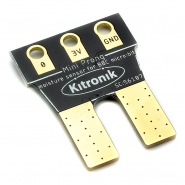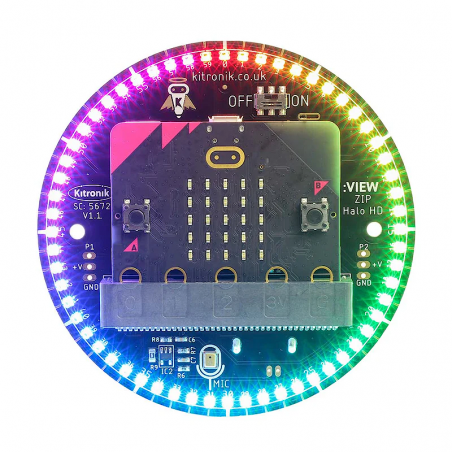
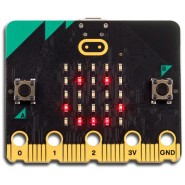







The Kitronik Halo HD board for the BBC micro:bit incorporates 60 individually addressable full colour ZIP LEDs. It also breaks out P1 and P2 to a standard 0.1” footprint, it features a MEMS microphone for detection of sound, and a piezo buzzer to play sound. If that weren't enough, it also features an onboard real time clock (RTC) controlled by I2C lines from the microbit. The board also has two M3 mounting holes. We think you'll agree, the board is loaded with useful features.
If you have any questions on this product please feel free to contact us.
*Disclaimer: The images are merely illustrative.
No tools required, not even a screwdriver, plug the micro:bit, available separately, straight into the onboard edge connector and you are good to go!
The board has a 3xAA battery holder mounted on the rear, with a power switch on the front of the board. A regulated supply is produced on the board which is fed into the 3V and GND connections to power the connected BBC micro:bit, removing the need to power the BBC micro:bit separately. See the Datasheet for more information.
Kitronik have created custom blocks for the Halo HD for use with MakeCode. To add these blocks, first go to makecode.microbit.org and start a new project. Under the “Advanced” section click on “Extensions”. In the next window search for “Halo HD”. Then, click on the tile to import it into MakeCode. You will see that the blocks are split across three categories; ZIP LEDs, Microphone and Clock. You can find more information on the MakeCode editor and also on how to write code for it with MicroPython in the Datasheet.
To get you off to a flying start we have produced a number of code examples that cover all of the onboard features and that will also serve to inspire your own projects. You will find links to these examples in the resources section below.

| Operating Voltage (Vcc) | 3.5V – 5V. |
| Number of ZIP LEDs | 60. |
| Number of external channels | 3 (1x ZIP LED, 2x IO pin, each IO channel rated +3V at 50mA). |
| Max Current (ZIP LED running full RGB brightness) | 0.9A (15mA per ZIP). |
| MEMS Microphone Sensitivity | -42 dBV/Pa (typical). |
| MEMS Microphone Signal to Noise Ratio | 59dB. |
| MEMS Microphone | P0 (analogue input). |
| P1 Breakout pin header | 1 – P1, 2 - +V (Battery Voltage), 3 - GND. |
| P2 Breakout pin header | 1 - P2, 2 - +V (Battery Voltage), 3 - GND. |
| ZIP LED | P8. |
| Buzzer | P14. |
| RTC | P19 & P20 (using the I2C lines). |
Related products

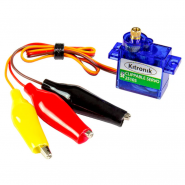
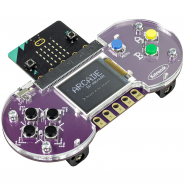

The Kitronik Halo HD board for the BBC micro:bit incorporates 60 individually addressable full colour ZIP LEDs. It also breaks out P1 and P2 to a standard 0.1” footprint, it features a MEMS microphone for detection of sound, and a piezo buzzer to play sound. If that weren't enough, it also features an onboard real time clock (RTC) controlled by I2C lines from the microbit. The board also has two M3 mounting holes. We think you'll agree, the board is loaded with useful features.

